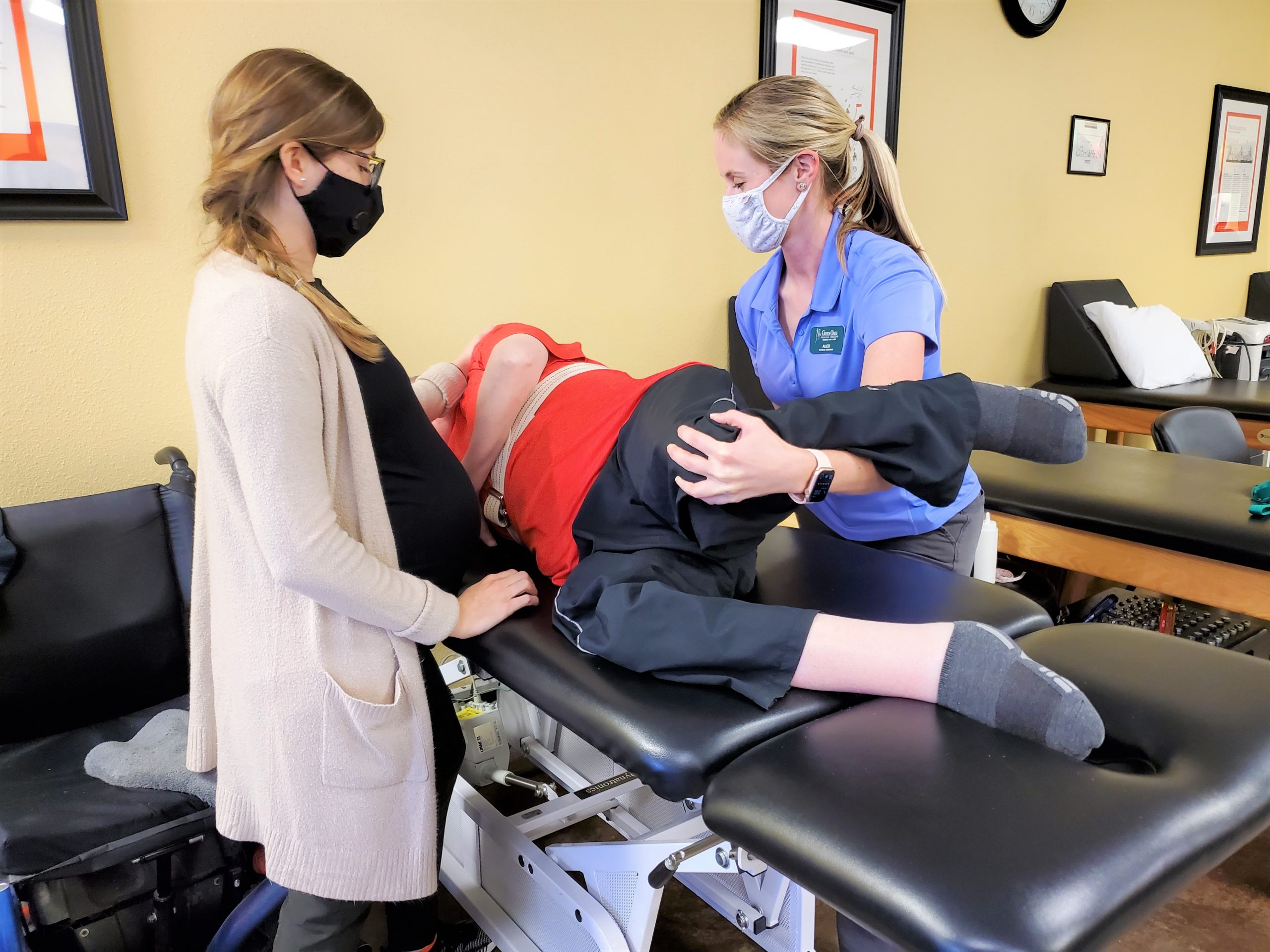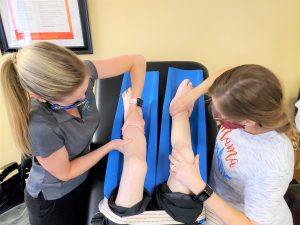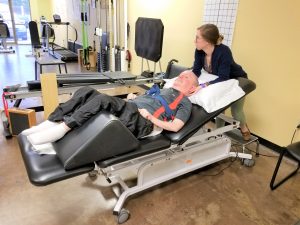Massage and Stretching Techniques For SMA Patients

During physical therapy, there are many different techniques that can be utilized to maximize the patient’s care. Some of these can include different manual techniques such as soft tissue massage, edema reduction massage, and manual stretching to increase the comfort and functional mobility of the patient.
As we have previously discussed, patients with SMA typically sit in a wheelchair all day, and don’t have the muscle capability to move their legs frequently throughout the day to decrease edema build up in the ankles and feet. Therefore, edema reduction massage is a great tool to decrease the fluid built up in the ankles and feet, to increase comfort and decrease risk of blood clots and other serious medical issues.


Another issue we have come across during physical therapy with our patient with SMA, Michael, has been muscle spasms in his right forearm supinator muscle group. This is the upper extremity that Michael uses throughout the day to work on his computer, as well as navigate the controls on his chair. By applying deep pressure to these muscles during therapy, the muscle group has begun to relax and allow Michael to have the maximum amount of use out of his right hand. The spasms began when we started aggressively stretching out his right bicep with forearm supinators, to increase the tissue extensibility of his right upper extremity, in hopes of gaining more control with more range of motion. In doing this, the muscle spindles have tensed up due to increased tension on the muscles. The deep pressure during massage has helped to keep the new length of the muscle as well as decrease the muscle spasms Michael was experiencing.


Cervical range of motion is a very important component to increase the amount of scanning the environment that Michael is able to perform, to increase his safety and awareness while navigating in his wheelchair throughout the day. We have assisted in improving these motions by manually stretching out his upper trapezius muscles, levator scapulae, as well as sternocleidomastoid and scalenes, and other deep rotators to increase the range of motion in his neck. This has been performed by transferring Michael onto the therapy table and resting him on an incline, with his head elevated to a comfortable position to allow to maximum relaxation to get the most out of the manual stretching. The upper trapezius muscle performs side bending and therefore is stretched by performing side bending to the opposite side to lengthen the muscle. We continue to stretch out the other muscles by performing rotation to both sides while stabilizing his shoulders to decrease compensation due to decreased muscle length. After rotation, we take him through flexion and extension range of motion with side bending, to incorporate more functional scanning.


All of these are manual techniques that have been included to Michael’s plan of care, to allow for increased assistance in functional improvements. All of these techniques have carried over to Michael’s increased ability to perform activities throughout the day, with improved range of motion and comfort with every day activities.
======================== Patient Perspective ========================

We all know that having someone massage your neck relieves the pressure and the stiffness that you feel after a long day, and those of us with SMA are no different. We spend the majority of our days sitting in our wheelchairs, and this lack of mobility can cause aches and pains that can make our days extremely uncomfortable. It wasn’t until I started physical therapy that I realized the importance of stretching and different massage techniques.
The swelling that I experience in my feet are caused by quite a few contributing factors, but the biggest reason is due to immobility, along with the body’s inability to draw fluids from my lower extremities and to disperse them throughout my body. The edema massage helps by pushing the fluid away from my ankles and feet, allowing my heart to pump stronger, thus allowing the decrease of swelling in my lower extremities. Not wearing foot rests has also been another contributing factor to the swelling that I’m experiencing, and my new wheelchair that I’ll be getting in the next month, will not only have foot rests, but it will also recline back, which will allow me to get my feet above the level of my heart a couple of times a day, which should dramatically decrease the amount of swelling that I’m experiencing.
Muscle spasms have also been an issue over the past year, due to the amount of stretching that I’m doing during physical therapy. By stretching my right bicep and forearm, the forearm supinators have started spasming, making it difficult for me to use the joystick on my wheelchair, along with maneuvering the mouse on my computer at home. This deep tissue massage that Emily performs on this particular muscle, has dramatically decreased the amount of spasming that I’m going through on a day-to-day basis. While deep tissue massage is not the most comfortable thing to go through, the relief that I get is definitely worth the discomfort that I might have to go through.
By working on the cervical range of motion, I’ve found that I’m able to turn my head further to the left and to the right, making it easier to scan my surroundings while maneuvering in my wheelchair. This manual stretching that Emily performs is actually quite comfortable to go through, and while it hasn’t dramatically increased the range of motion when looking from side to side, it’s definitely helped, and while I know that it’s a work in progress, my hopes are that we will continue to see improvement in the future.
Even though SMA patients are not considered world-class athletes, stretching should still be an integral part of any physical therapy program. Physical therapists need to remember that patients with SMA have extremely sensitive muscles, and any change to these muscles can be much more dramatic for them than someone who is considered able-bodied. Stretching before and after physical therapy can definitely pay benefits for patients with spinal muscular atrophy.

